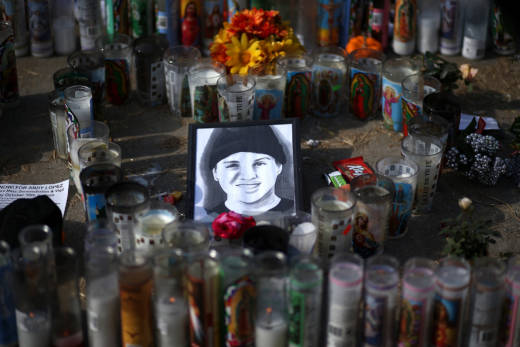"It gets us out of appellate limbo," attorney Arnoldo Casillas said of the 9th Circuit opinion issued Friday. "They surprised us with this appeal literally months before the trial and we've been in limbo for two years."
He said the ruling Friday was a "gift from God" for Lopez's family.
"They were super emotional about the result and you know justice has been slow, creeping at glacial speed, but slowly, surely it will come," Casillas said.
Ana Salgado is a Santa Rosa community activist who grew close to Andy Lopez's family after he was shot. She said the 9th Circuit's decision Friday vindicated the family's position.
"That proves that we were right, they were wrong," she said. "That proves when you keep fighting for what is fair, things happen. And we knew it since the beginning, this was so wrong on so many levels.
An attorney representing Gelhaus and Sonoma County said his clients were "disappointed" in the appellate ruling, and he pointed out that Judge Clifford Wallace dissented from judges Milan Smith and Richard Clifton.
The county's legal argument centers on the legal doctrine of "qualified immunity," which shields public officials from civil liability as long as their actions did not violate clearly established constitutional rights. The doctrine is often applied to civil lawsuits over law enforcement use of force.
"Qualified immunity should apply when you have an officer in a life-or-death situation who has to make judgments about whether or not to use deadly force in essentially milliseconds," defendant's attorney Noah Blechman said. "We’re evaluating our options," which could include an appeal to the U.S. Supreme Court.
The 9th Circuit opinion focuses on whether Lopez raised the toy rifle as he turned toward Gelhaus and his partner, Michael Schemmel.
From the 9th Circuit opinion, which cites the district (trial) court's findings:
The court expressly found that it "can conclude on that the rifle barrel was beginning to rise; and given that it started in a position where it was pointed down at the ground, it could have been raised to a slightly-higher level without posing any threat to the officers." ... Moreover, one would expect the barrel to rise an inch or so as the momentum of Andy's clockwise turn moved his left arm slightly away from his body. But that incidental movement alone would not compel a jury to conclude that Gelhaus faced imminent danger given the starting position of the gun. Furthermore, this interpretation is bolstered by Gelhaus's admission that the weapon would benignly "swing somewhat" with each step that Andy took."
During a video-recorded deposition of Gelhaus, the sheriff's sergeant was asked to re-enact Lopez's movements. "The video depicts the gun in Gelhaus's fully-extended arm and at his side as he turns, consistently pointed straight down towards the ground," the appellate ruling says. "Notably, if the weapon rose in a manner that was objectively threatening, one would think that Gelhaus would be eager to demonstrate the upward motion. Gelhaus's reenactment does not do so."
"Like the trial court and the court of appeals said, you can’t shoot somebody," Casillas said. "You call out to somebody, they turn around, they don’t point the gun at you, you can’t shoot."
He said he expects the case to go to trial at a federal court in Oakland within a year.
Read the 9th Circuit majority and dissenting opinions below.
